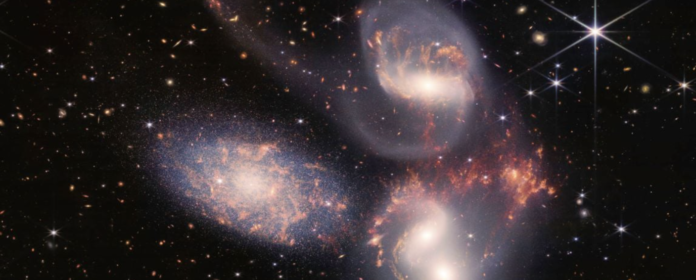The James Webb Telescope captured images of galaxies from the past that should not theoretically exist, despite the limitations of our human minds.
According to Nature, a team of international scientists analyzed images taken near the Big Dipper and found six potential galaxies. These galaxies were formed between 500 and 700 million years after Big Bang. According to the team’s calculations, the galaxies could have as many stars than the Milky Way and should therefore theoretically not exist if we accept current cosmological theory.
Joel Leja, one of the study authors, stated that they had certain expectations about the types of galaxies found in the early universe. They were young and small. “Previous Hubble and other instruments have shown that early universe studies tend to reveal small, blue, infant galaxies. These are objects which have just formed from primordial cosmic soup, and are now building their stars and structures.
Space observed that younger stars tend to be brighter blue than older ones, and they start to change color as they get older. This theory is called redshift. Webb did not intend to study ancient galaxies. Astronomers didn’t expect to see any red stars or galaxies with more than a billion stars. Their findings revealed something very different.
Leja stated that the masses of the most massive galaxies in this sample were two to four times smaller than those of our Milky Way. “This was amazing — we found galaxy candidates as large as our galaxy, even though the universe was only 3% of its current age.
Astronomers are being forced to rethink their current theories about the cosmos by this discovery.
It seems almost like we humans don’t know all and might need to be more open-minded about our place in the cosmos. Perhaps all the theories we’ve made over the years aren’t going to hold up to modern scrutiny? It seems that the field of Astronomy will experience the same changes as archaeology. I’m so excited to be there to witness it all unfold.










